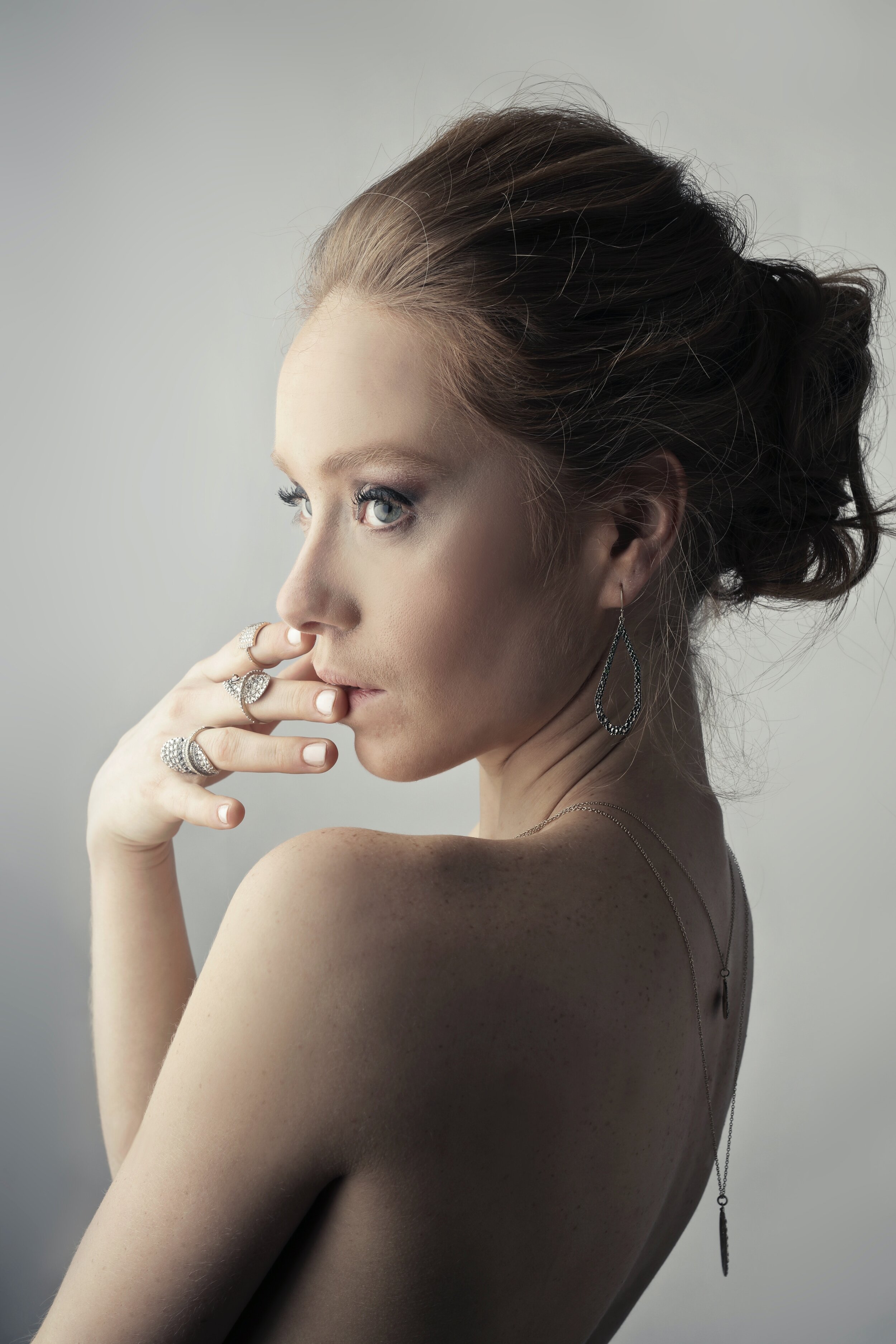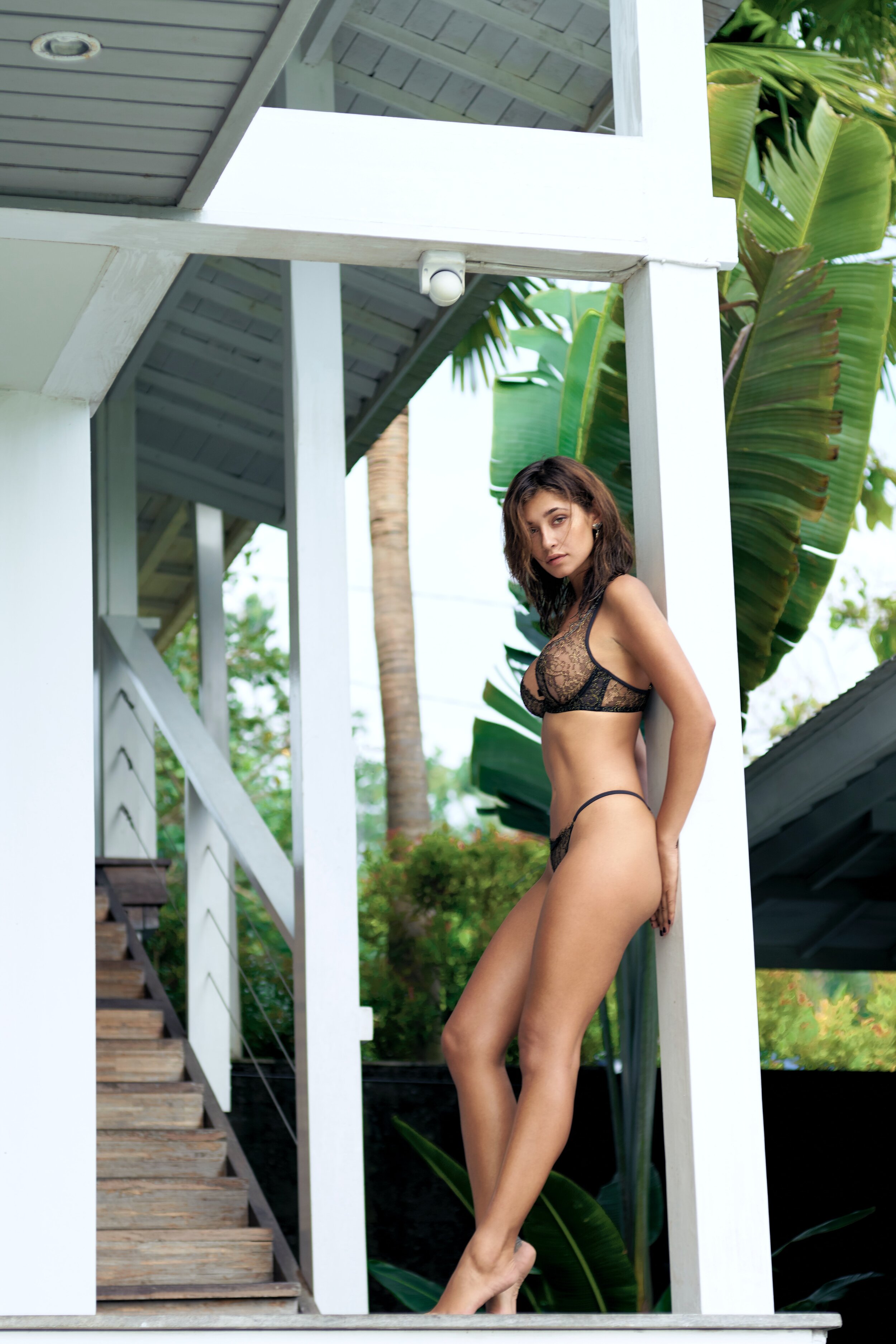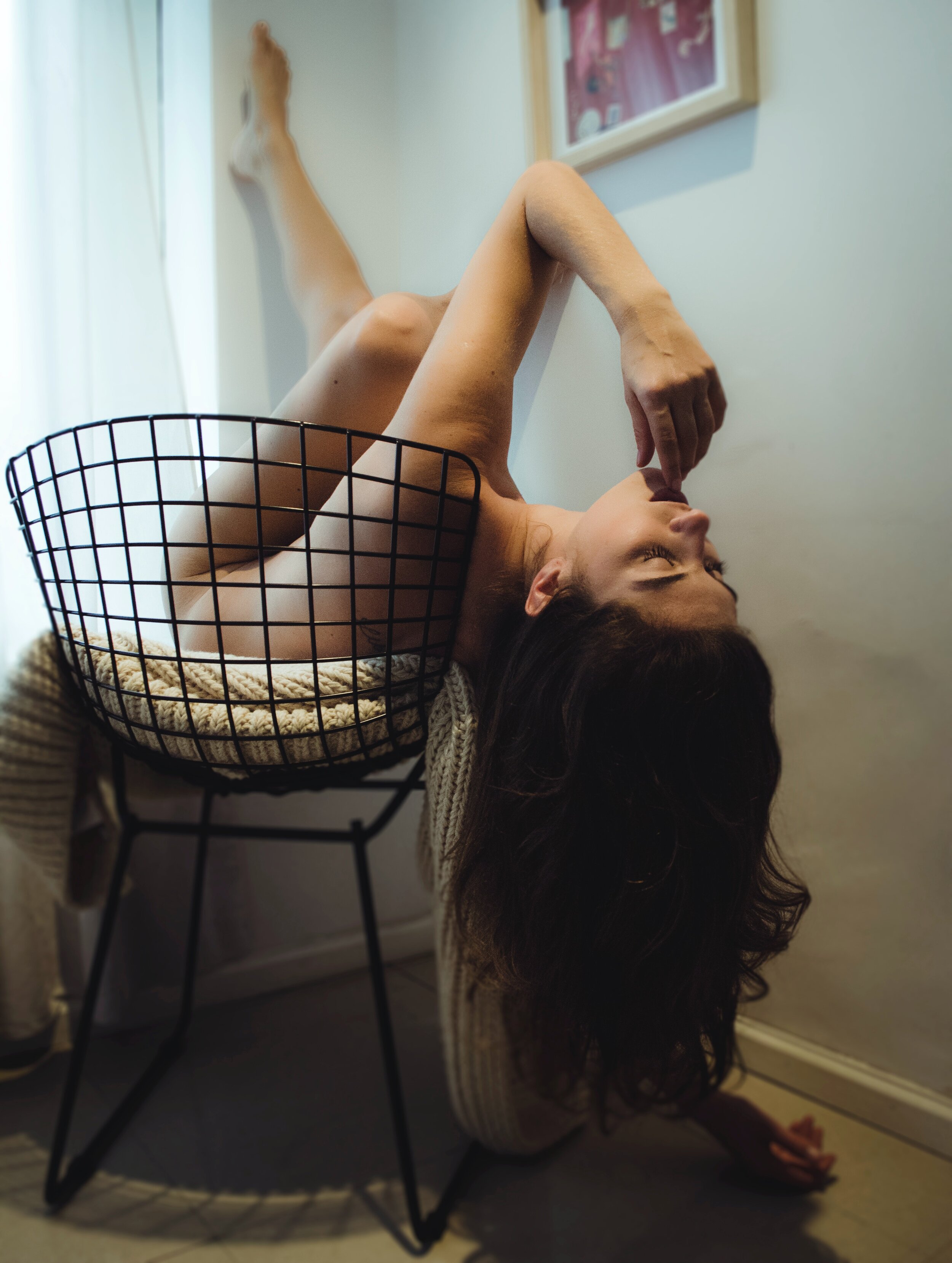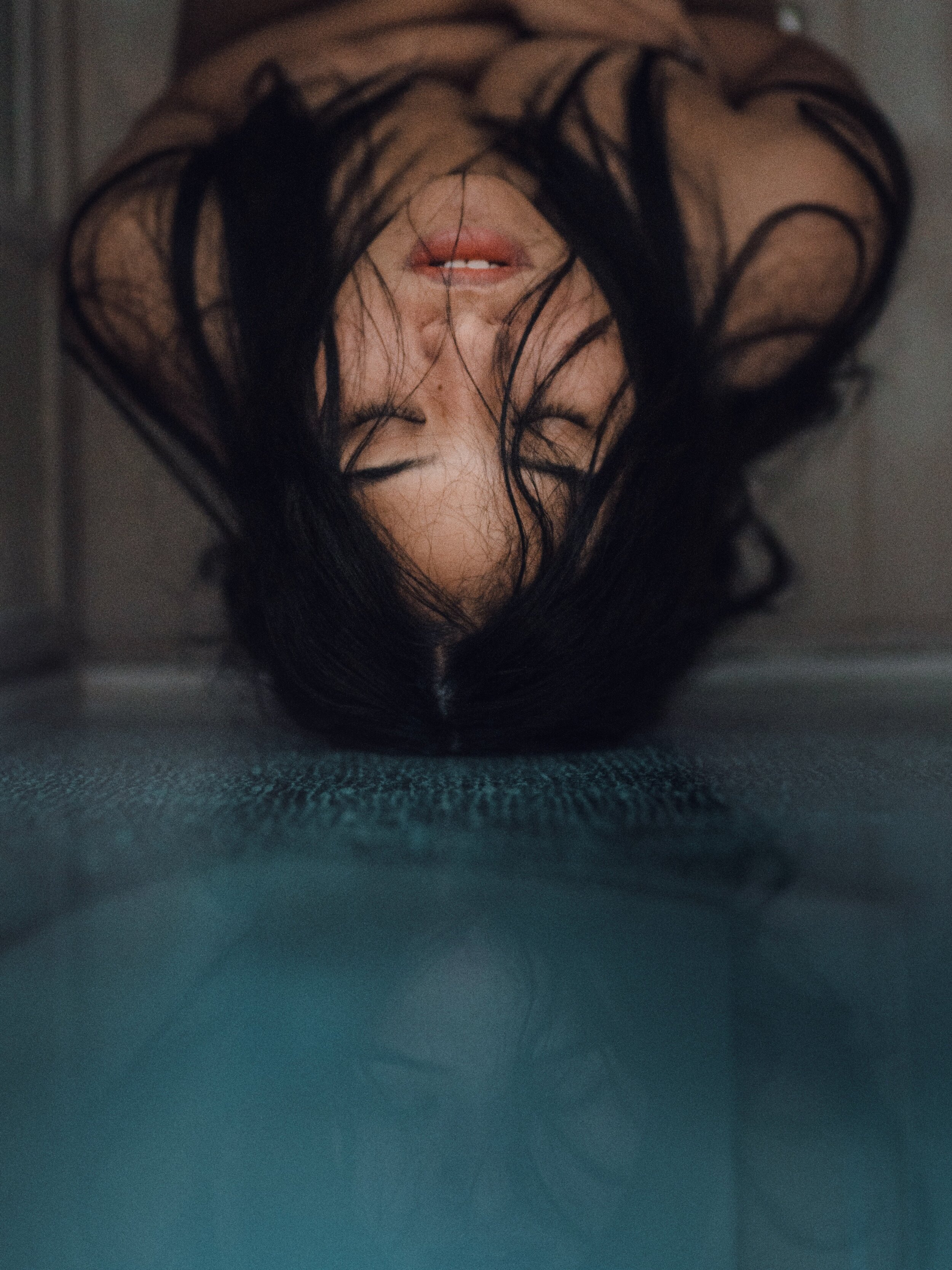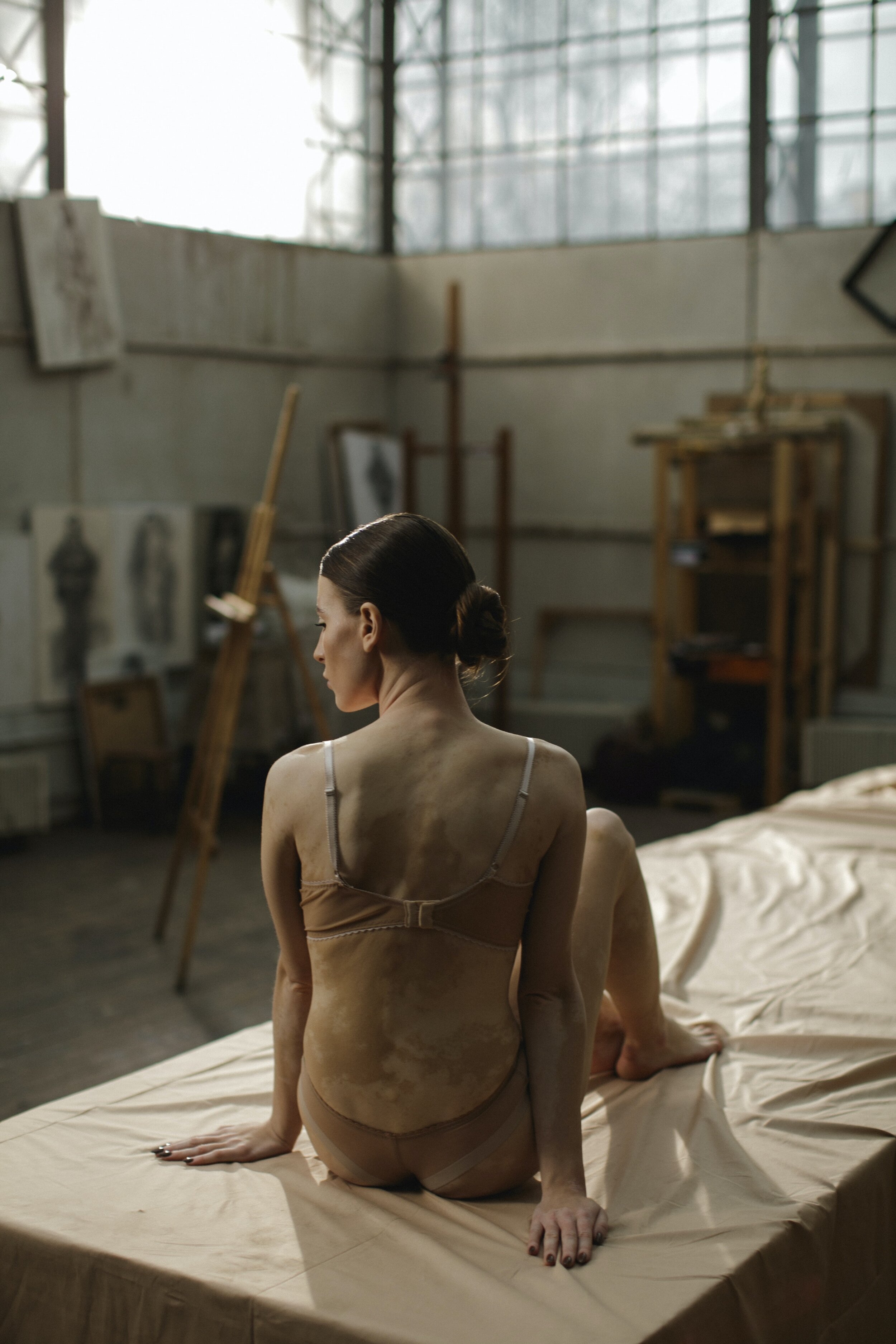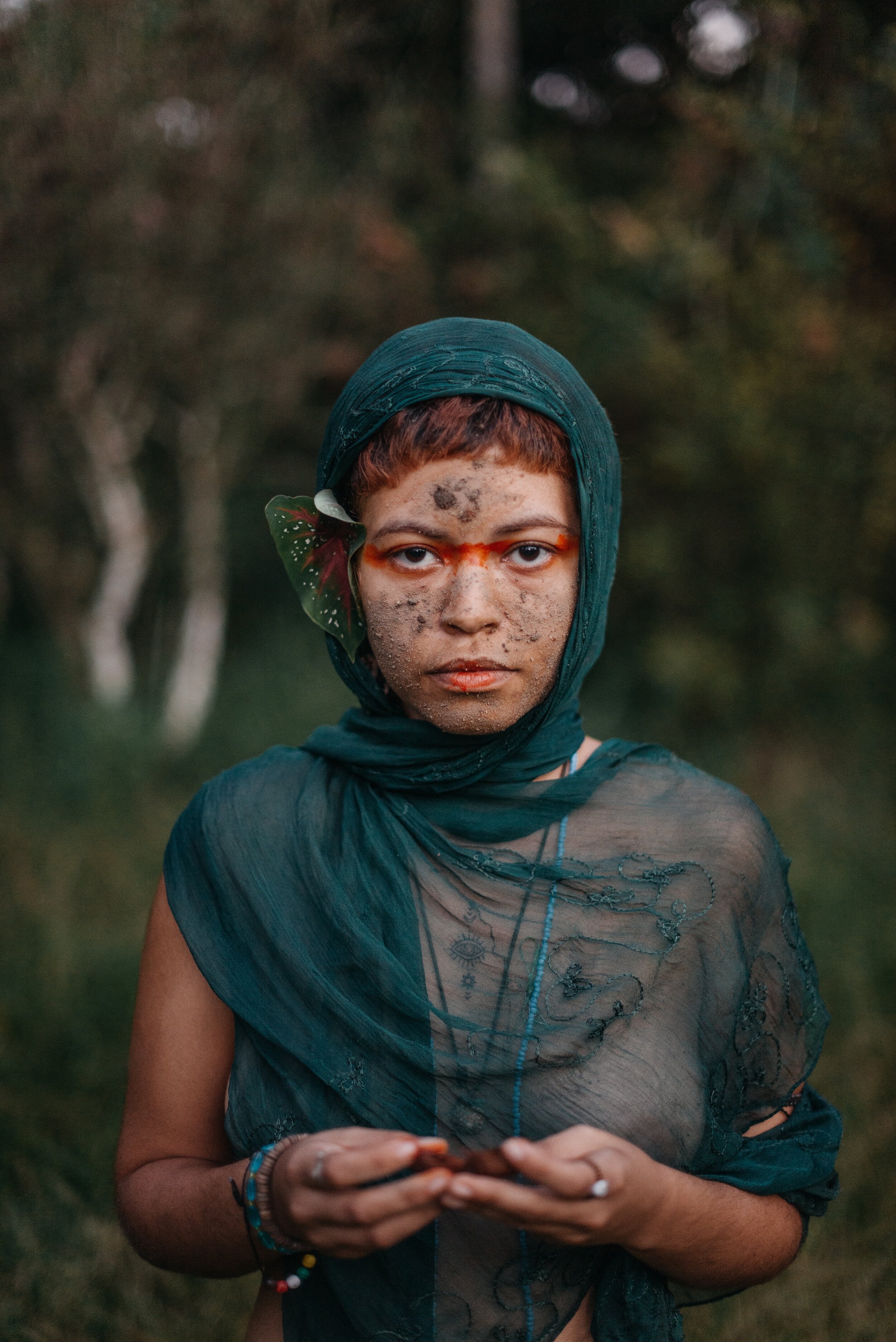The Art of Fine Art Nude Photography
There is a genre of beautiful art photography that's not often written about. Indeed, we've never before written about it on our blog - not that it was a conscious decision.
However, we think this genre is important enough to write it on our blog to offer some tips for those wanting to venture into this area or those who'd like to improve their work. That genre is fine art nude photography.
First, we want to clarify that when we refer to nude photography, we mean images that are artistic, creative, and generally tasteful. We realize that a nude image might evoke surprise or discomfort for the viewer. However, we do not refer to pornographic images in this post. Also, we do not support the exploitation of a person serving as an unwilling model. There are significant differences between legitimate and artistic nude photography and pornography.
Lastly, we use the words "client" and "model" interchangeably. However, there are times when there might be a distinction between them.
Defining Fine Art Nude Photography
Professional photography that is nude, semi-nude, or implies nudity is typically considered nude photography. It's also regarded by most photographers as a type or sub-genre of fine art portrait photography.
It can be used for personal purposes - a client would like to gift it to a partner, for example. It can also be requested for commercial purposes, such as an advertisement.
Nude photography typically generates expressive, artistic imagery that can sometimes also be poignant. The most apparent difference between nude portraiture and regular portraits, of course, is that the model isn't wearing any clothes. There's nothing to hide behind. But it's that degree of exposure and vulnerability, that an experienced photographer can capture beautifully and artistically.
The earliest civilizations across the globe left behind their depictions of the nude or semi-nude human body - whether through hieroglyphics, cave art, paintings in various mediums, or sculptures. Photography, invented in the early 19th century, is the new kid on the block when it comes to human depictions of the body.
Twelve Tips for Shooting Nude Photography
If you enjoy portrait photography and being creative in your work, nude photography could be for you. Here are some pointers on what you should do or consider.
1. The Challenges of Nudity
The absence of clothing does not make it easier to do a portrait. Capturing the human body in its "birthday suit" and in its most natural state while remaining creative and tasteful isn't as easy as it might sound. Because so many people associate nude images with hyper-sexualization or pornography, it can be challenging to create an aesthetic that is artistic in form.
Another challenge can be working with a client who isn't accustomed to modeling in the nude. This is usually a private client requesting - for whatever reason - nude images. They might want these images, but then feel very uncomfortable once they are naked or semi-naked in front of a camera. It's the photographer's role to create a comfortable experience in a safe space for their client.
2. Communication
The most experienced portrait photographers are master communicators with clients and models. At the very least, they know how to set models so that everyone is comfortable. It's especially crucial in nude photography to communicate well and be ready to answer your client's questions thoroughly. Be sure to discuss their ideas as well as yours for the portraits. You need to be on the same page about the type of images you will produce for them.
It can be a good idea to discuss poses with your client and how you envision the photo session playing out so that they know what to expect. The more they know beforehand, the more comfortable they're likely to feel.
3. Real or Enhanced?
In the last few years, some photographers, models, and clients have moved more toward "real" nudes. These are images that limit or eliminate post-production photoshopping. They are entirely realistic without any enhancements of the body.
Whether to photoshop or not usually comes down to the client's preferences or vision for the project. They might prefer images that depict the body in a more "positive" light and appreciate post-processing enhancements. And yet, a different client might request an entirely natural picture with no photoshopped improvements.
As a photographer, you need to discuss and understand your client's vision and parameters for their pictures. You'll also want to know their comfort levels with nudity, especially if the client is also the model. This is not a genre where you should impose your vision.
4. Plan Your Shoot
Excellent portrait photography, including nude photography, doesn't just happen. It takes significant planning. You need to consider details such as room temperature, where the client can change, lighting, equipment, and the room's layout.
As we stated earlier, nude photography is not as simple as it might sound. For beautiful images, you'll need to carefully plan your angles, lighting, and composition to achieve your client's vision for their portraits. Check all your equipment ahead of time and make sure you have backup lighting and batteries. Run through your normal advance checklist to make sure you're ready to go once your model is ready to begin the photo session.
Lastly, remember the vision or goal for the images that you and your client agreed to beforehand. Work toward that throughout the photo session. Work quickly and efficiently without sacrificing quality. It's not pleasant for a model, especially a non-professional model, to wait around naked for you to finish fiddling with lights or other gear. Think and plan ahead!
5. The Model
You should always begin the photo session by taking steps to ensure your model feels as comfortable and at ease as possible. Remind yourself that standing nude in front of a stranger is not easy for most people. Always have a fresh robe available that they can use during any downtime. Make sure you leave the room while they undress, and
It's not advisable to simply walk in and start taking pictures. The best portrait photographers know that they need to chat with their model, trying to build a rapport before they even pick up a camera. If your model is comfortable, your pictures will reflect that ease. If they're uncomfortable, you'll find it tough to get a great picture of them!
Spend at least a few minutes chatting with them before you start taking their picture. You might want to first chat with them while they're still clothed, then continue the conversation after they've undressed. You discuss your ideas and theirs for the photo session and take the conversation from there.
We suggest that a few minutes into taking pictures, you stop and share your images with them. This includes them in the creative process. Encourage them to offer feedback on the pictures. The point is to help them feel relaxed with you and the camera. It's crucial that they feel they can trust you and have some say in the process.
Lastly, you'll want to keep the mood fun and casual, even humorous, if you feel that the model would appreciate it. The more you know your model before the session, the easier it would be to make jokes or keep the mood light.
6. Focal Lengths
We recommend you start the photo session by keeping some physical distance between you and your model unless they are a very experienced nude model. The personal distance allows them to build up a comfort level before you get in closer. An 85mm is a good option both for its capabilities and that it will look less intimidating than a typical zoom.
7. Poses
As with any portrait photography, the type of poses you choose depending largely on why the images are being produced. A commercial application might call for entirely different poses than private photos. You will need to take your guidance from the client and use your experience and best judgment for selecting poses. As we stated earlier, be sure to discuss them with the client ahead of time.
Generally, most nude photography benefits from simpler poses. The body is at its most vulnerable and natural. Why complicate it with unnatural or complex poses?
8. Do Not Touch
With most portrait photography, and particularly with nude portraits, never touch your model without their permission and full understanding. If you need to touch them for some reason, perhaps to adjust a pose, never touch them before you ask for permission! In fact, you're better off demonstrating and explaining the pose rather than touching them at all. If they're not comfortable being touched, don't push. Find another way to make the adjustment.
9. Degree of Nudity
Not all nude photography has to be completely undressed. Sometimes a semi-nude (partially dressed or covered) model can look as sensual or beautiful as if they were naked. And sometimes, less is more depending on the visual or aesthetic of the composition.
Use poses, composition, and angle to create or enhance interesting curves or lines. You also don't have to reveal everything, even when someone is nude. Leaving something to the imagination can be very powerful visually.
10. Setting an Aperture
Aperture can change the mood of a portrait, which means it's particularly important when shooting nude photography. If you're already an experienced portrait photographer, you'll appreciate the role of aperture in creating powerful portraits.
To draw the attention strictly to the model and details - and not the background - set your camera at f/1.4 to create a shallow depth of field and isolate your subject from the background. This allows draws the viewer's focus to the details in the image rather than the nudity.
If the background plays a critical role in the overall image, you'll want to set a smaller aperture, perhaps f/8. This keeps both the model and the background in focus.
11. Black and White and RAW
Black and white photography can be a particularly interesting and beautiful style for depicting nude images. It is flattering to skin tone, but it is also an ideal way of creating visual drama and mystery.
We suggest shooting RAW images for the flexibility it offers. While shooting RAW, you can shoot in black and white on your camera, but record the color in your RAW file. Later, you can decide whether to convert the RAW file to black and white or edit in color.
Shooting in RAW format records way more data than JPEG. It will give you far more control when you want to edit your photos later. It also allows you to recover more details from the shadows and highlights typical of black and white.
12. Location for Photo Session
Venues are obviously an important part of portrait photography. Needless to say, they are particularly important in nude photography. You can just show up at a random park and start taking pictures of an undressed model. The scope or intent behind the project will determine where you can shoot your pictures. It might be that a studio is the best place or some remote landscape. You'll determine the best place after speaking with the client.
Outdoors:
Landscape plays a vital part and even influence with outdoor sessions; otherwise, you might go indoors to a studio. Also, the photographer might be less likely to shoot a shallow depth of field. The background is more integral to the composition and can add texture, depth, interest, and set the mood. It can even enhance the look of the model.
However, there are some downsides to shooting nude photography outdoors. Nothing is perfect, after all! Weather and privacy are challenges you will have to deal with at some point if you're going to shoot outside. Can you expect a model to feel comfortable when they're naked outside, and the temperature is cold? Yes, you can certainly use the robe we mentioned earlier, but still. And how about rain? That can pose challenges while being an added plus to the mood of an image.
All of the usual rules of shooting outside - such as avoiding the noon sun - apply to nude photography outdoors. Early morning and early evening are ideal times to shoot, as are overcast days.
Lastly, keep in mind that being nude outdoors is illegal in many places. You'll need to work around privacy issues and laws. You wouldn't want someone calling the authorities on your photoshoot.
Indoors:
Shooting nude photography indoors affords you the greatest freedom and artistic control over things such as environment, lighting, temperature, and privacy.
You'll likely want to incorporate a shallow depth of field in some of the shots.
Consider your poses relative to the background.
Use natural light as much as you can indoors, even if it means moving the model closer to a window. (Don't forget your neighbours!)
Your nude photographs, like all photography, will improve with practice and experience. Tackle first from the perspective of a fine art portrait photographer. Then, take into consideration its unique challenges that we've discussed in this article. By being intuitive, sensitive, and a consummate professional at all times, you can advance your work as a nude portrait photographer.
Conclusion
Interior designer Giselle DaMier of ElephantStock wall art gallery shares her expertise:
"Nude portraits have long been a staple in the world of interior design, which makes them an ideal addition to any contemporary home. Nowadays, We're seeing more and more photographers turning their artworks to canvas prints "Wowing" their guests with a curated collection of their own work.
Many modern photographers choose to sell their photography online through ElephantStock's artist community. ElephantStock turns photographs into high-quality canvas prints for customers who wish to add artistic decor to their interior." Giselle concludes.



